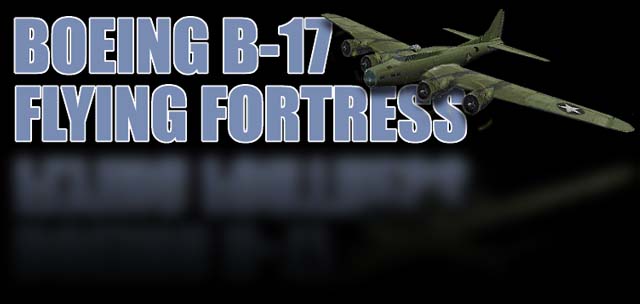
European Air War

B-17 Flying Fortress
The B-17 Flying Fortress is certainly the most celebrated and even romanticized bomber of the Second World War. And although the tour of duty on a B-17 was arduous, simply due to the nature of the missions they were called upon to perform, these durable aircraft certainly were beloved by their crews. Many a Fortress limped home with extensive battle damage, even with entire pieces of the wing or tail section blown off.
The first B-17 design was put forward in 1934 and the prototype flew the following year. The B-17F model, with a single molded plastic nose to improve the field of view of the bombardier, a more capable crew oxygen system to a better undercarriage and an improved autopilot, was first deployed with the 8th Air Force in Europe and went operational on January 27, 1943 in a raid on Wilhelmshaven. Over the course of the war, Douglas, Lockheed and Boeing all contributed to the production of 8685 B-17's.
Boeing B-17F Flying Fortress
Wingspan: 103 ft. 9 in.
Length: 74 ft. 9 in.
Height: 19 ft. 1 in.
Engine: 4 x Wright R-1820-97 Cyclone rated 1,200 hp.
Loaded Weight: 65,500 lb.
Maximum Speed: 287 mph.
Service Ceiling: 37,500 ft.
Combat Radius: 1,000 miles
Armaments: 6,000 lbs. of bombs, 12 x .50 cal. machine guns
Defensive Fire Arc:
This material was included in the original 1998 release of European Air War by Microprose.
